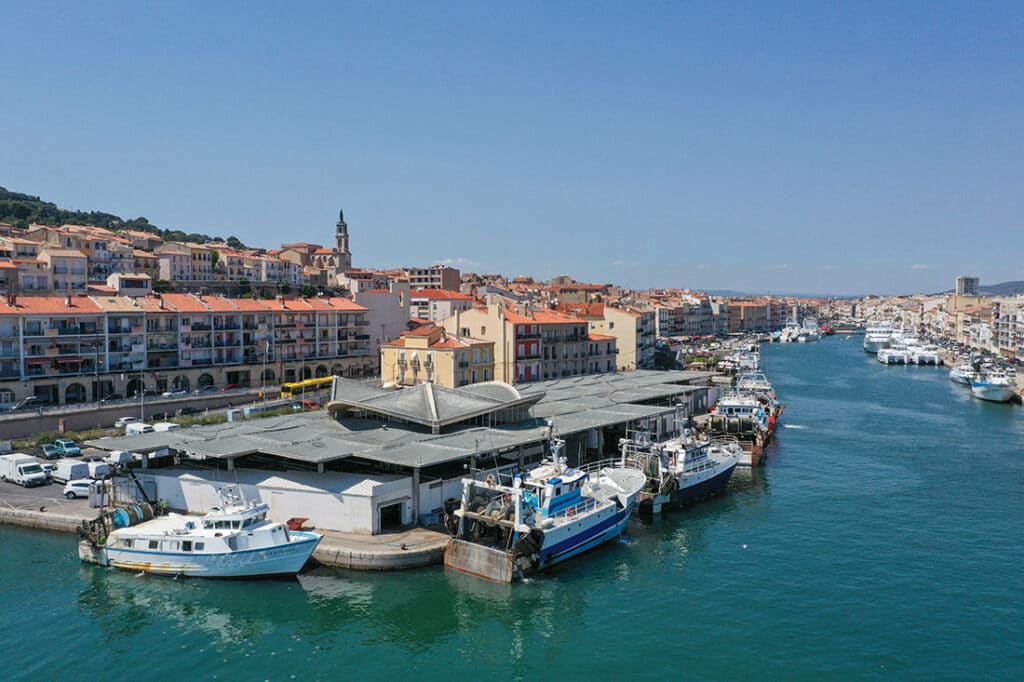
Fishing is a historic activity for the port of Sète.
At the end of 2022, the fish market building was completely refurbished to improve product handling, enhance quality and modernize the structure to make it more energy-efficient.
The Sète fish auction is an emblematic site in the town of Sète, a market reserved exclusively for professionals, where fishermen sell their freshly caught fish by auction.
The Sète fish auction is particularly renowned for the quality of its Mediterranean fish and seafood. It’s one of the region’s main fishing ports, and every afternoon on their return from fishing, local fishermen bring their catch to the fish market for sale.
Professional buyers, usually fishmongers and restaurateurs, gather to try and acquire the various lots of fish and seafood at the best price. The fish are on display, and the downward bidding is fast-paced.
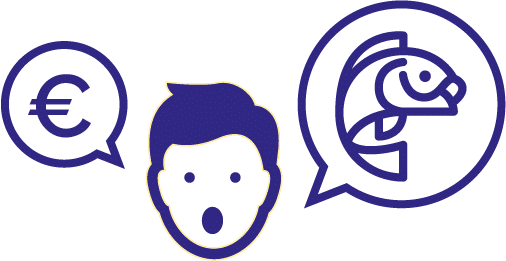
After qualifying a lot (name of vessel, species, size, quality, day of fishing, etc.), the seller sets a starting price for the auction.
The lot is then simultaneously presented for sale online (on the Internet) and to buyers (in the auction room). As soon as it goes on sale, the price starts to fall.
Buyers are equipped with remote controls that enable them to acquire a lot by pressing the buy button. The designated product is awarded to the highest bidder.
Products are sold by top-down auction, known as Dutch auction.
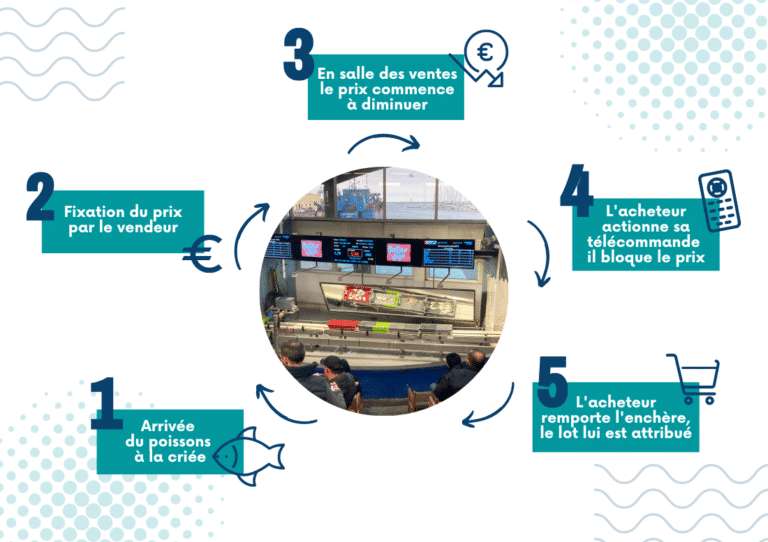
In the event of a “collision”, i.e. if several buyers activate their remote controls at the same time, they want a lot at the same price: the auction goes up (the price rises).
The buyer who holds down the buy button the longest wins the auction, at a higher price.
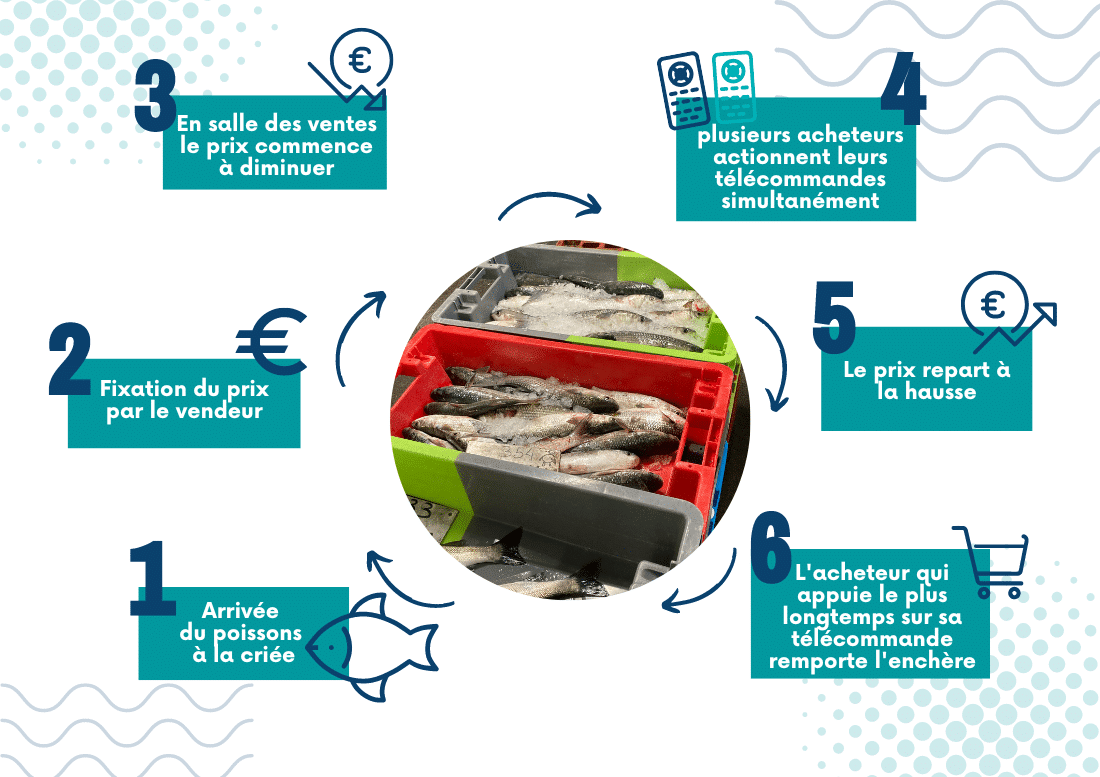
This sales principle has the particularity of allowing a very rapid rate of sale. The Sète fish market sells an average of 700 bins of product (lots) per hour, for a total of around 1,600 lots per day. This guarantees the quality and freshness of the products sold.
Access to the Sète auction room can be made from anywhere in the world, with just an Internet connection. Remote buyers of the Sète fish market can make their purchases directly on the online sales website and buy simultaneously.
By logging on remotely, the buyer can directly access scheduled purchases.
Purchase scheduling is a service exclusive to online sales.
To meet the needs of both fishermen and buyers, the Sète fish market has two sales routes:
The quays of Sète’s fishing port are home to a diversified fleet:
The Sète tidal market is home to 13 trawlers and over 200 small craft from Sète and the surrounding area. To come and sell their products at the auction, fishermen are required to provide a “acte de francisation”, a RIB and a registration form in order to be registered by the fishing port services. Port staff will be on hand to explain the tidal hall and how it works.
Every day, the Sète fish auction sells the products of trawlers and some 30 small-scale fishing boats (up to 40 at the height of the season).
The fleet of vessels landing products at the Sète fish market is made up of several types of vessels with different and complementary fishing strategies:
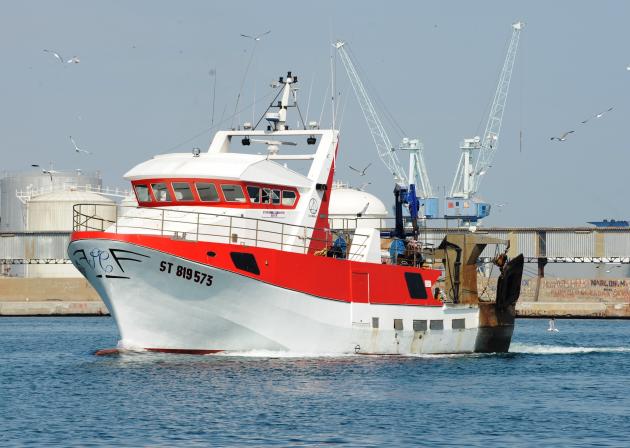

Iron and polyester trawlers to fish offshore
(5 to 6 hours’ drive).

Wooden trawlers fish closer to home, but beyond three nautical miles
(3 to 4 hours’ drive).
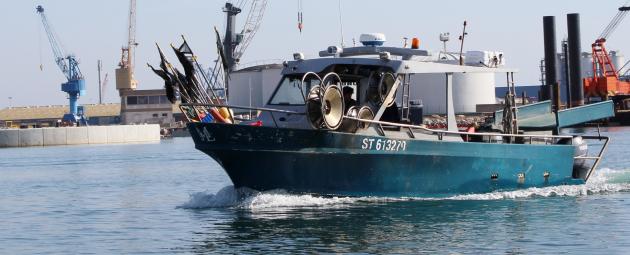

The range of products offered for sale at the Sète auction is diversified: eels, green crabs, anchovies, monkfish, sardines, scorpion fish, sars and sea bass.
The fish market offers products from artisanal fishing. The boats registered at the auction only go out for the day, which means that we can offer products of exceptional quality and freshness for sale.
In 2022, the most popular species sold at auctions were :
A total of 2,200 tonnes of seafood were identified, weighed, offered for sale and handled by auction staff and partners over the course of 2022.
Thanks to its unique location, between sea and pond, certain products are highly seasonal.
Bluefin tuna
Tuna seiners and small-scale fishermen in Sétois fish bluefin tuna in strict compliance with international regulations. Their fishing seasons are governed by ministerial decrees, observers are on board the purse seiners, and there are daily checks at sea and on the quayside, and so on. Each year, ICCAT’s Scientific Committee sets fishing quotas based on the state of the bluefin tuna stock.
Each tuna caught is identified by a marking ring attached to the fish’s tail. This ring guarantees that the fish has been caught in full compliance with regulations.
Thanks to these fishing quotas, bluefin tuna stocks are now rebuilt. Seiners and small-scale fishermen are the first to be affected by this trend. This ensures the continuity of their profession.
The Thon Rouge de Ligne collective brand is proof of the awareness of fishermen and their commitment to sustainable, responsible fishing.
Today, with stocks in good condition, supermarkets are once again selling bluefin tuna. www.thonrougedeligne.com
Only professionals can buy at the auction. To do so, they must register with the auction’s administrative department: once the registration form has been completed and the necessary guarantees put in place, the buyer can come and make his purchases at the Sète auction.
Different types of buyers make their daily purchases at the Sétoise auction:
Port de Sète © 2023 Legal notice | Site map | Privacy policy | RGAA Charter | Website creation Keole.net
